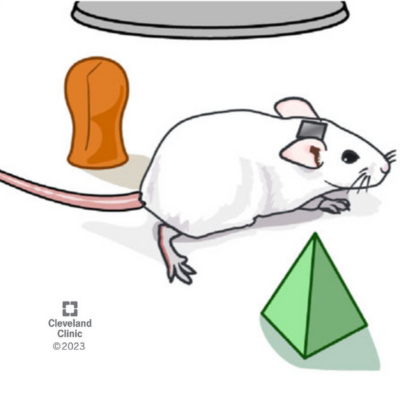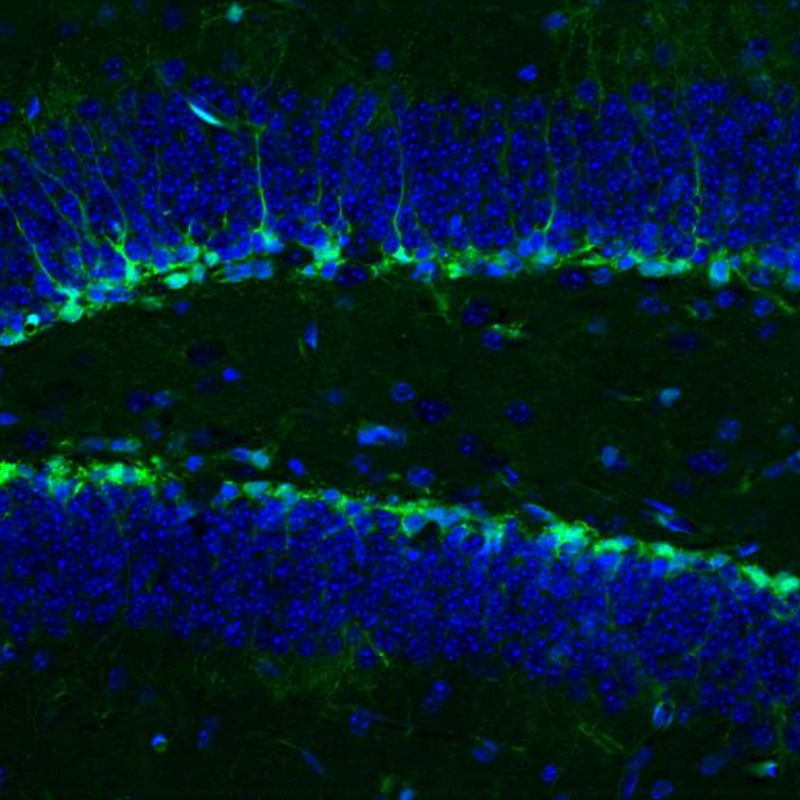Mice on a time-restricted feeding schedule had better memory and less accumulation of amyloid proteins in the brain compared to controls
Aug. 22, 2023.
3 min. read
8 Interactions
"Biggest health challenge"
Circadian modulation by time-restricted feeding rescues brain pathology and improves memory in mouse models of Alzheimer’s disease
One of the hallmarks of Alzheimer’s disease is disruption to the body’s circadian rhythm (the daily internal biological clock that regulates many of our physiological processes). Nearly 80% of people with Alzheimer’s experience these issues, including difficulty sleeping and worsening cognitive function at night.
Surprisingly, there are no existing treatments for Alzheimer’s that target this aspect of the disease.
Improvements
Now, in a new study, published August 21, 2023 in the journal Cell Metabolism, researchers at the University of California San Diego School of Medicine used time-restricted feeding of mice within a six-hour window each day (for humans, this would translate to about 14 hours each day).
The mice showed improvements in memory and reduced accumulation of amyloid proteins in the brain, compared to control mice, who were provided food at all hours.
Mice fed on the time-restricted schedule had better memory, were less hyperactive at night, followed a more regular sleep schedule and experienced fewer disruptions during sleep.
The test mice also performed better on cognitive assessments than control mice, demonstrating that the time-restricted feeding schedule was able to help mitigate the behavioral symptoms of Alzheimer’s disease.
The researchers also observed improvements in the mice on a molecular level. In mice fed on a restricted schedule, the researchers found that multiple genes associated with Alzheimer’s and neuroinflammation were expressed differently.
They also found that the feeding schedule helped reduce the amount of amyloid protein that accumulated in the brain. Amyloid deposits are one of the most well-known features of Alzheimer’s disease.
Circadian disruptions: cause of neurodegeneration?
“For many years, we assumed that the circadian disruptions seen in people with Alzheimer’s are a result of neurodegeneration, but we’re now learning it may be the other way around — circadian disruption may be one of the main drivers of Alzheimer’s pathology,” said senior study author Paula Desplats, PhD, professor in the Department of Neurosciences at UC San Diego School of Medicine.
“This makes circadian disruptions a promising target for new Alzheimer’s treatments, and our findings provide the proof-of-concept for an easy and accessible way to correct these disruptions.”
Biggest health challenge
Alzheimer’s disease affects more than 6 million Americans, and it is considered by many to be the biggest forthcoming health challenge in the United States.
People with Alzheimer’s experience a variety of disruptions to their circadian rhythms, including changes to their sleep/wake cycle, increased cognitive impairment and confusion in the evenings, and difficulty falling and staying asleep.
“Circadian disruptions in Alzheimer’s are the leading cause of nursing home placement,” said Desplats. “Anything we can do to help patients restore their circadian rhythm will make a huge difference in how we manage Alzheimer’s in the clinic and how caregivers help patients manage the disease at home.”
Because the time-restricted feeding schedule was able to substantially change the course of Alzheimer’s in the mice, the researchers are optimistic that the findings could be easily translatable to the clinic, especially since the new treatment approach relies on a lifestyle change rather than a drug.
“Time-restricted feeding is a strategy that people can easily and immediately integrate into their lives,” said Desplats. “If we can reproduce our results in humans, this approach could be a simple way to dramatically improve the lives of people living with Alzheimer’s and those who care for them.”
This study was funded, in part, by the National Institute on Aging (grants AG061831 and 5T32AG066596-02) and the National Insititute of Neurological Disorders and Stroke (grant P30NS047101).
Citation: Whittaker, D. S., Akhmetova, L., Carlin, D., Romero, H., Welsh, D. K., Colwell, C. S., & Desplats, P. (2023). Circadian modulation by time-restricted feeding rescues brain pathology and improves memory in mouse models of Alzheimer’s disease. Cell Metabolism. https://doi.org/10.1016/j.cmet.2023.07.014 (open-access).
Let us know your thoughts! Sign up for a Mindplex account now, join our Telegram, or follow us on Twitter.

.png)

.png)


.png)








1 Comments
One thought on “Mice on a time-restricted feeding schedule had better memory and less accumulation of amyloid proteins in the brain compared to controls”
In his book "Why we get sick", Dr Benjamin Bikman talks about insulin resistance of the hippocampus as one potential player in Alzheimer disease. And he explains how circadian disruptions are one of the core causes of insulin resistance in any cells.
Secondly, there is a whole book called "Circadian Code" by Dr Satchin Panda that teaches how the circadian rhythm works biologically and how one can optimize it with things such as eating, exercising and sleeping.
Just in case that someone happens to be interested.
🟨 😴 😡 ❌ 🤮 💩